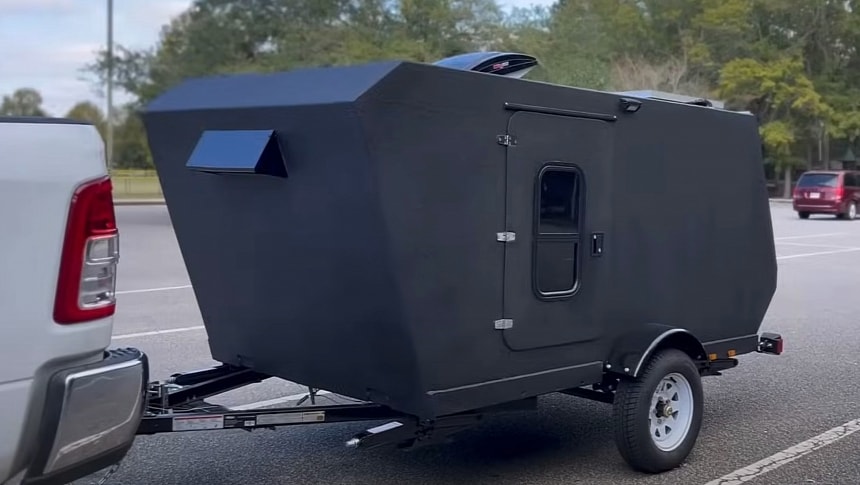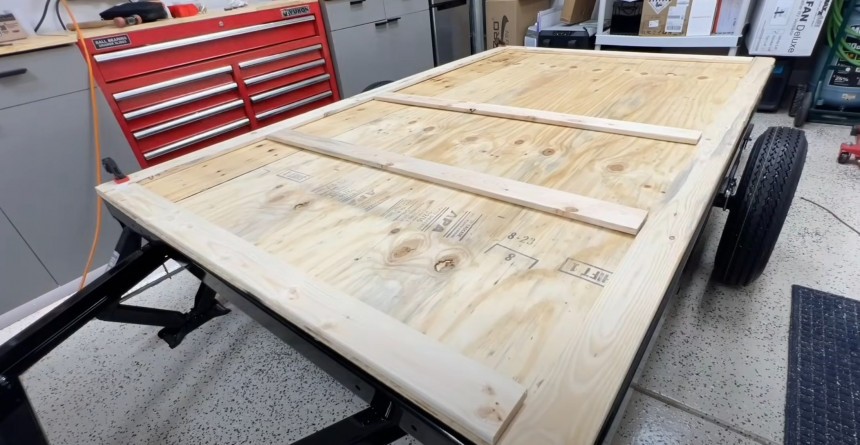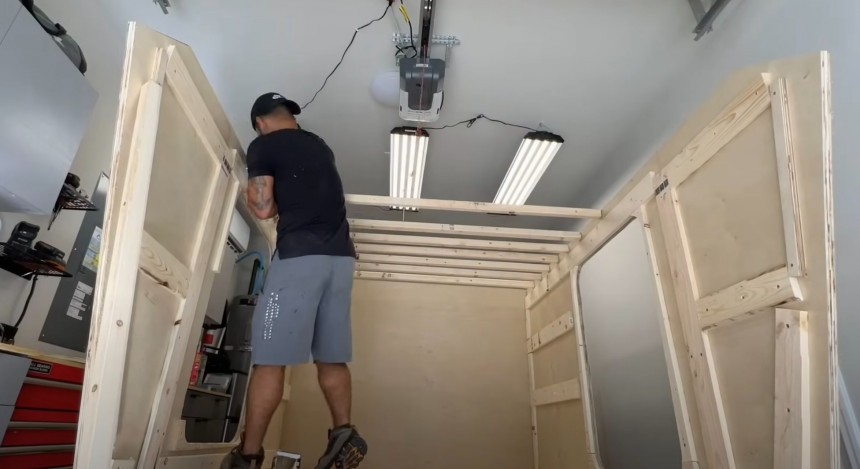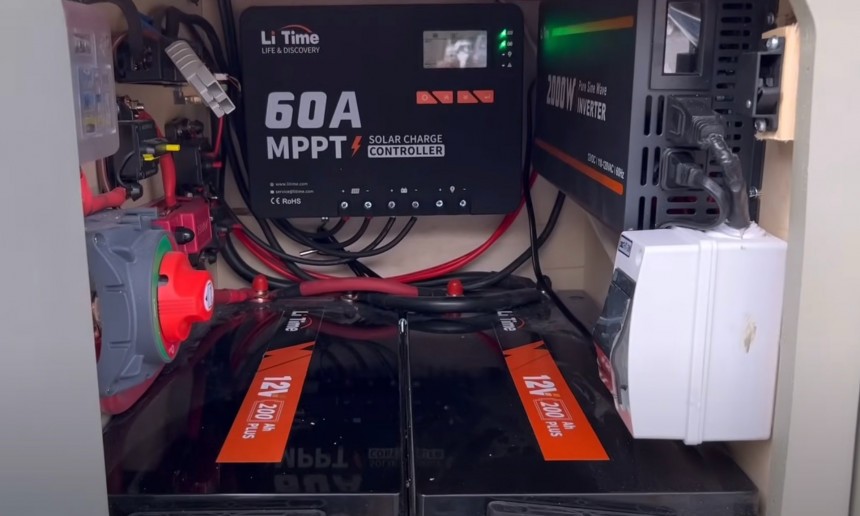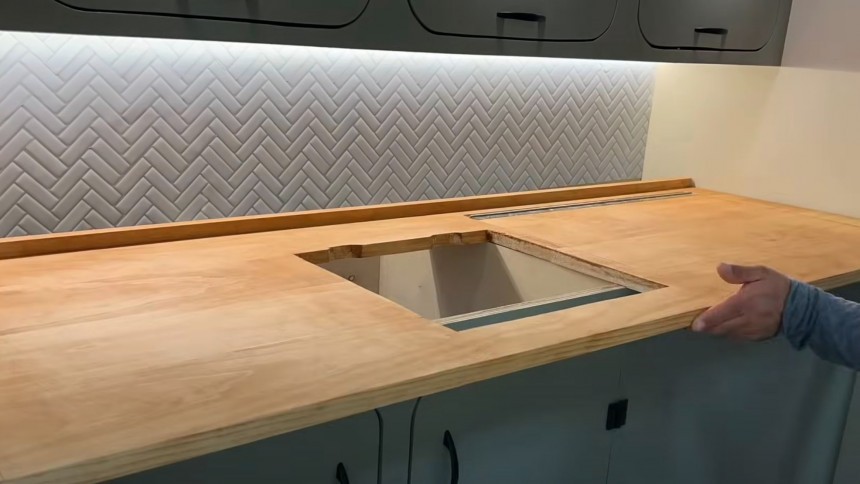If you've got time and limited bucks, one way to get your hands on a camper is to simply build one. Well, that's precisely what the folks over at Builders Blueprint have done and are sharing the step-by-step process of making their own travel trailer.
I recently stumbled across a little video on a YouTube channel dubbed Builders Blueprint (BB). It's here that I locked eyes with one of their most recently uploaded projects, a DIY micro camper born in nothing more than a garage. Best of all, the channel host even shares the steps they went through to bring this puppy to life.
Now, the neat thing about all this is that if you follow along with the video and use a tad of brain power and elbow grease, you can reproduce the unit we see here today. Along the way, you can customize it to better fit your adventurous needs. Time to see what it takes to build our very own travel trailer and one that looks pretty dang good, is equipped with the basics we need, and according to a weigh-in at a CAT Scale, it comes in with a weight of just 1,500 lbs (680 kg).
As we begin our journey into this project, it's important to note a few things. The first is that I wasn't able to spot a total build price for the project, and secondly, some of it is prefabricated; not much, just the chassis, suspension, and wheels.
Once that chassis and suspension have been set up, stabilizers included, it's time to call upon good old wood to bring this puppy to life. The first layer is nothing more than a subfloor completed out of 1/2-inch plywood panels, which have been painted on the underside for protection.
With this layer in place, it's time to craft a small frame for strength and insulation and place a final plywood panel on top. Your floor is ready, folks. Obviously, there are a few extra steps in the whole process, but I think you can figure out the fact that you'll need to measure twice, cut once, drill holes, and glue components together.
Yet, it's the next stages that really give this unit its shape. While I won't bore you with all the details like measuring, cutting, sanding, and gluing, once the hosts finished setting up the left and right walls, the remainder of the frame is completed, roof trusses and all. With more plywood for interior paneling, this mobile home starts to take on its final form.
Now that there's a solid base to work with, we're then shown how this crew builds their roof, and if you have any previous experience crafting such a machine, feel free to comment on the way the lighting is completed.
As for the all-important electrical system, it begins to take shape at this stage. One thing I need to mention about an electrical system is that if you don't know how to set one up properly, be sure to ask for professional assistance or installation. If you get this one wrong, you can imagine what can happen.
But, the neat thing about building your own camper is that you can tune this setup to your needs for a fraction of the price that a camper manufacturer could. The one we have here is ready with two batteries, a solar power controller, an inverter, and even solar panels; all the things you want when you're out there in the wild or in some trailer park.
With electrical in place, and wires drawn, the remainder of the shell is brought to life. First, you'll need to seal your seams and screw holes - you can use boat sealant like BB's host or any other product you're familiar with - but it's the next stage where things get tricky.
Due to the size and shape of this micro camper, for added strength and protection, a layer of fiberglass is added to the entire exterior of this puppy. This, too, is a tricky stage, so be sure you read up on what's to be done, including protecting yourself in the process. Oh, and if you're planning to follow through with the same steps you see BB carrying out, you'll need to go through this step again for the rear galley hatch.
What I enjoyed about BB's work is the thoroughness with which they expose all the steps necessary to build this beast. It's one reason why this video has already been seen over 788K times. Because of this, you'll have a rather solid grasp on how to bring that rather attractive galley to life, the interior cabinetry, and even what AC setup they use; it's an EcoFlow Wave 2.
The remaining steps include finishing touches like a layer of Raptor truck liner coating - a solid DIY camper solution for sealing and protecting your unit - putting up the side doors, waterproofing things like electrical lines and the vent on top, installing jerry can holders, and solar panels. Let's not forget about the water tanks, sink and faucet, and pumps found in the galley. Safety and brake lights are installed, and the finishing touch is a Sennheiser soundbar in the galley, or were they the beefier wheels?
In my opinion, this thing came out rather ready to handle extended weekend trips out of town, and it looks good, too. But it's obviously not perfect, so I ask, what would you have done differently in the process? Be sure to check out the video below and comment.
Now, the neat thing about all this is that if you follow along with the video and use a tad of brain power and elbow grease, you can reproduce the unit we see here today. Along the way, you can customize it to better fit your adventurous needs. Time to see what it takes to build our very own travel trailer and one that looks pretty dang good, is equipped with the basics we need, and according to a weigh-in at a CAT Scale, it comes in with a weight of just 1,500 lbs (680 kg).
As we begin our journey into this project, it's important to note a few things. The first is that I wasn't able to spot a total build price for the project, and secondly, some of it is prefabricated; not much, just the chassis, suspension, and wheels.
With this layer in place, it's time to craft a small frame for strength and insulation and place a final plywood panel on top. Your floor is ready, folks. Obviously, there are a few extra steps in the whole process, but I think you can figure out the fact that you'll need to measure twice, cut once, drill holes, and glue components together.
Yet, it's the next stages that really give this unit its shape. While I won't bore you with all the details like measuring, cutting, sanding, and gluing, once the hosts finished setting up the left and right walls, the remainder of the frame is completed, roof trusses and all. With more plywood for interior paneling, this mobile home starts to take on its final form.
As for the all-important electrical system, it begins to take shape at this stage. One thing I need to mention about an electrical system is that if you don't know how to set one up properly, be sure to ask for professional assistance or installation. If you get this one wrong, you can imagine what can happen.
But, the neat thing about building your own camper is that you can tune this setup to your needs for a fraction of the price that a camper manufacturer could. The one we have here is ready with two batteries, a solar power controller, an inverter, and even solar panels; all the things you want when you're out there in the wild or in some trailer park.
Due to the size and shape of this micro camper, for added strength and protection, a layer of fiberglass is added to the entire exterior of this puppy. This, too, is a tricky stage, so be sure you read up on what's to be done, including protecting yourself in the process. Oh, and if you're planning to follow through with the same steps you see BB carrying out, you'll need to go through this step again for the rear galley hatch.
What I enjoyed about BB's work is the thoroughness with which they expose all the steps necessary to build this beast. It's one reason why this video has already been seen over 788K times. Because of this, you'll have a rather solid grasp on how to bring that rather attractive galley to life, the interior cabinetry, and even what AC setup they use; it's an EcoFlow Wave 2.
In my opinion, this thing came out rather ready to handle extended weekend trips out of town, and it looks good, too. But it's obviously not perfect, so I ask, what would you have done differently in the process? Be sure to check out the video below and comment.
